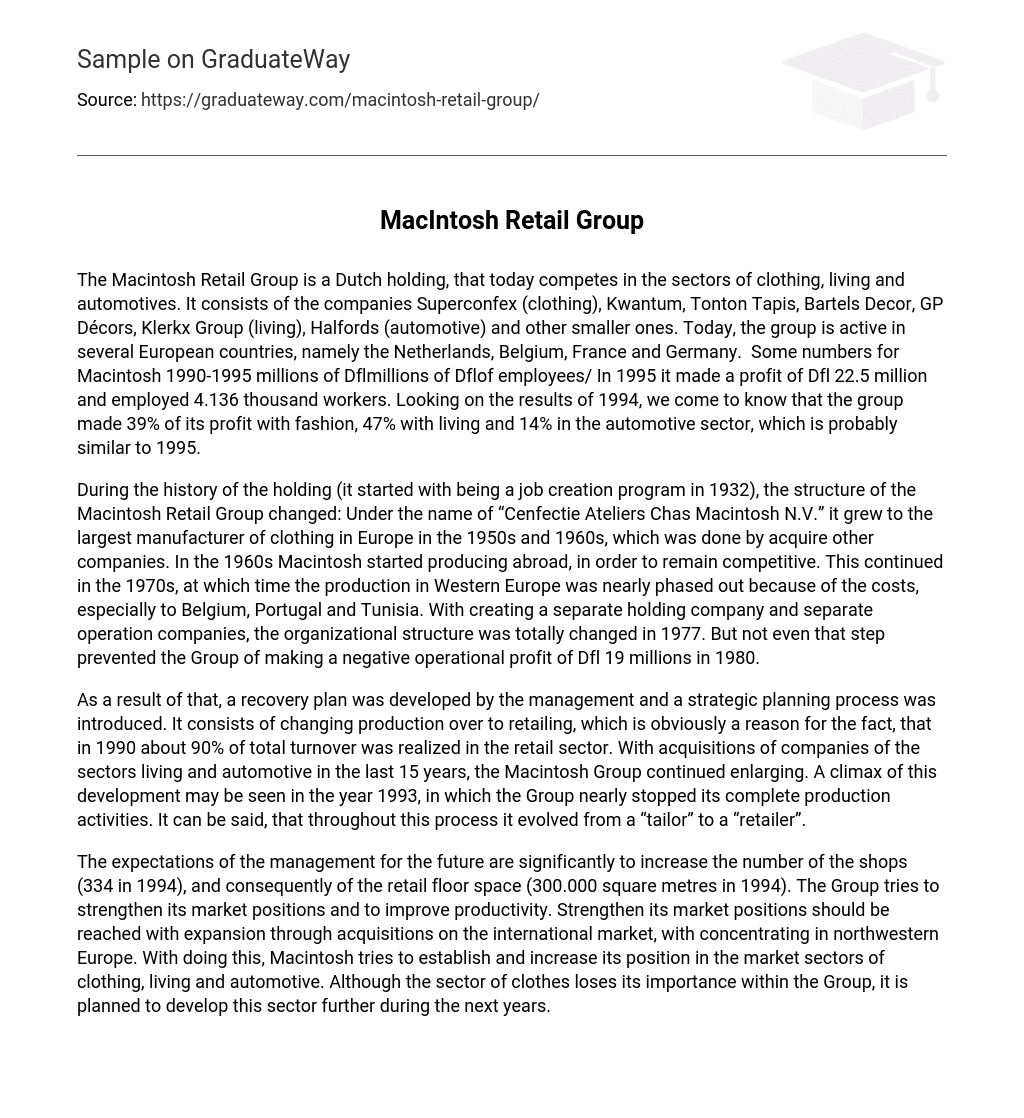The Macintosh Retail Group is a Dutch holding that competes in the sectors of clothing, living, and automotives. It is composed of Superconfex (clothing), Kwantum, Tonton Tapis, Bartels Decor, GP Décors, Klerkx Group (living), Halfords (automotive), and other smaller companies. The group operates in the Netherlands, Belgium, France, and Germany. In 1995, it made a profit of Dfl 22.5 million and employed 4,136 thousand workers. In 1994, the group generated 39% of its profit from fashion, 47% from living, and 14% from the automotive sector. These numbers are likely similar to 1995.
Throughout its history, the Macintosh Retail Group has undergone various transformations. Originally established as a job creation program in 1932, the company, known then as “Cenfectie Ateliers Chas Macintosh N.V.”, became the largest clothing manufacturer in Europe during the 1950s and 1960s through the acquisition of other companies. To maintain competitiveness, Macintosh began manufacturing overseas in the 1960s, and by the 1970s, production in Western Europe, particularly in Belgium, Portugal, and Tunisia, was largely phased out due to high costs. In 1977, the company implemented a new organizational structure with a separate holding company and operation companies. However, these changes did not prevent the group from experiencing a negative operational profit of Dfl 19 million in 1980.
The management implemented a recovery plan and introduced a strategic planning process, resulting in the transition from production to retailing. This led to a noteworthy increase in turnover from the retail sector by 1990. During the last 15 years, the Macintosh Group expanded its operations through acquiring companies in the living and automotive sectors. The pinnacle of this growth occurred in 1993 when the Group discontinued most of its production activities. This transformation can be characterized as a shift from being a “tailor” to becoming a “retailer”.
The management has set future expectations for a notable growth in the number of shops (334 in 1994) and retail floor space (300,000 square meters in 1994). The Group’s goal is to reinforce its market positions and enhance productivity. To accomplish this, Macintosh intends to expand through acquisitions in the international market, with a specific focus on northwestern Europe. This expansion will help establish and strengthen the Group’s presence in the clothing, living, and automotive market sectors. While the clothing sector is diminishing in importance within the Group, there are plans to further develop this sector in upcoming years.





